Farmers are essential to all societies, producing food, fibre and helping to achieve Sustainable Development Goals (SDGs).
Despite this vital role, farming systems are coming under increasing stress from a range of negative influences, including climate change, an ageing workforce and competition for land use.
SPS Biota uses the Three Pillars and Five Actions of Climate Smart Agriculture (CSA) (Food and Agriculture Organisation), to provide a pathway for achieving successful outcomes that balance environmental protection, food security and economic development.
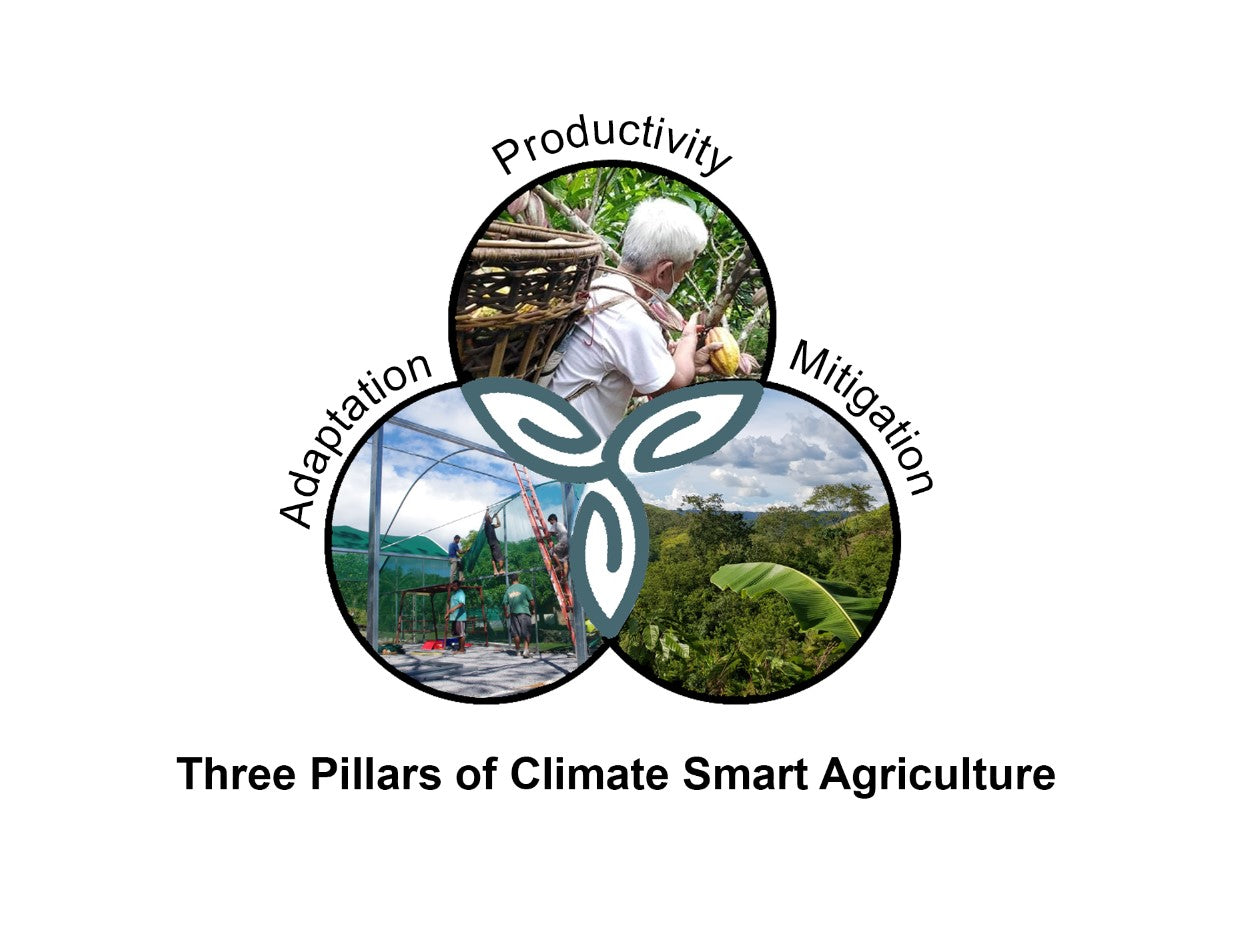
Five Actions
• Expanding the evidence base for CSA
• Supporting enabling policies
• Strengthening institutions
• Enhancing funding and financing
• Implementing CSA practices at field level
SMART
The SPS Biota approach aims to achieve a sustained resilience though measurable improvements and mitigations beyond the life of any project. The collection and analysis of qualitative and quantitative data applies SMART principles - specific, measurable, attainable, relevant and time-bound.
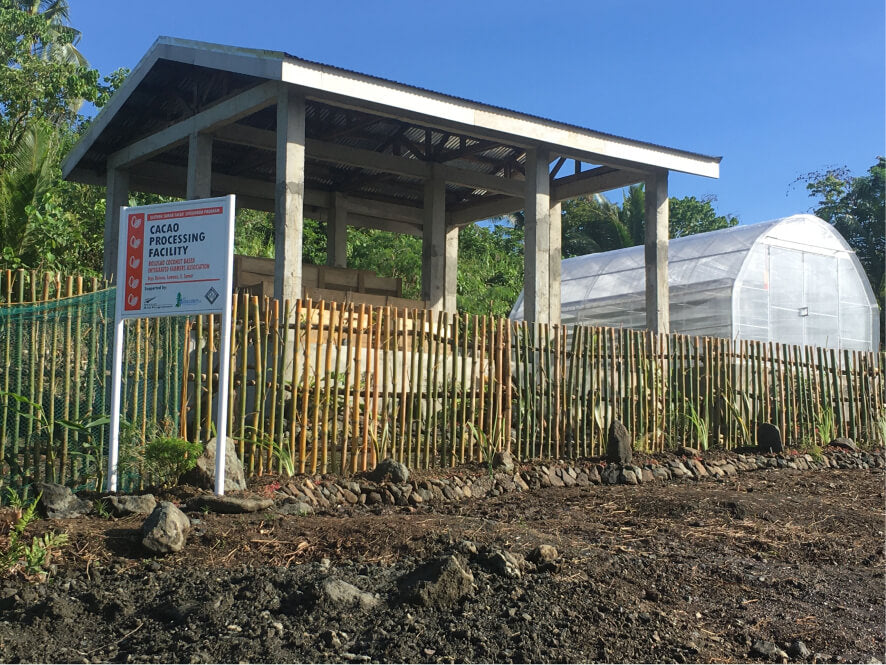
Typhoon resistant cacao fermentation and
drying facility -Philippines
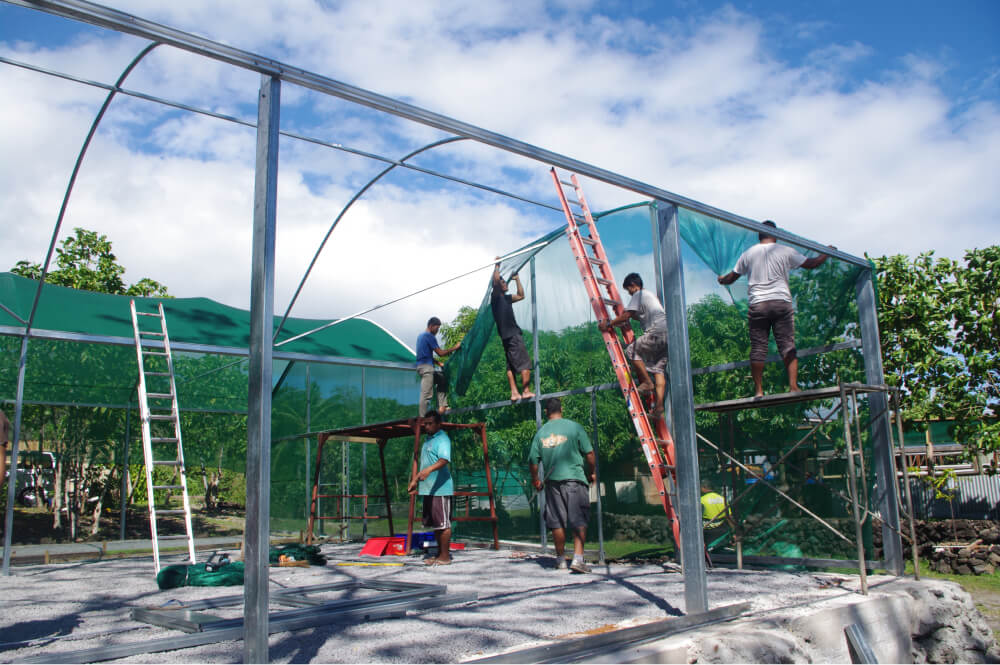
Cyclone resistant nursery structure - Samoa
Our key focus areas for implementing Climate Smart Agriculture projects in the field:
• Economic outcomes through increased agricultural production, improved farm incomes and fair market access
• Resilience and recovery related to adverse climatic events
• Improved market access and market development
• Addressing cross-cutting social issues and gender mainstreaming
• Working to REDD and REDD+ guidelines for projects associated with forest and agro-forest landscapes
• Protection of ecosystems and biodiversity, reduction of greenhouse gas emissions across the value chain and carbon sequestration
• Traceability of commodities and certifications to a farm level
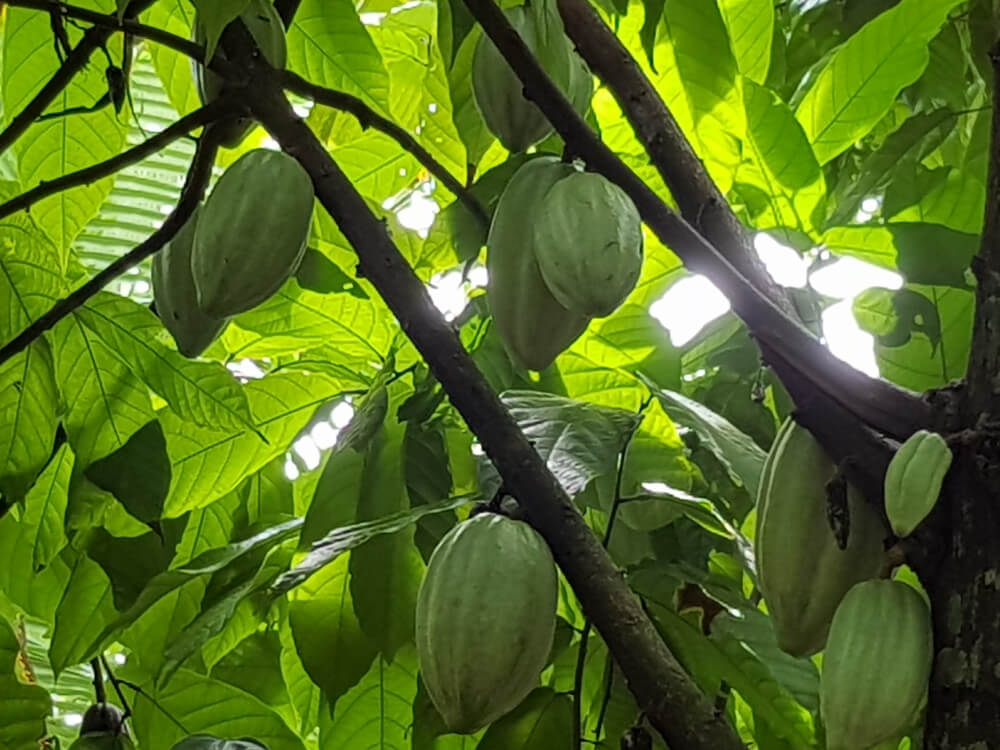
Cacao pods - Vanuatu
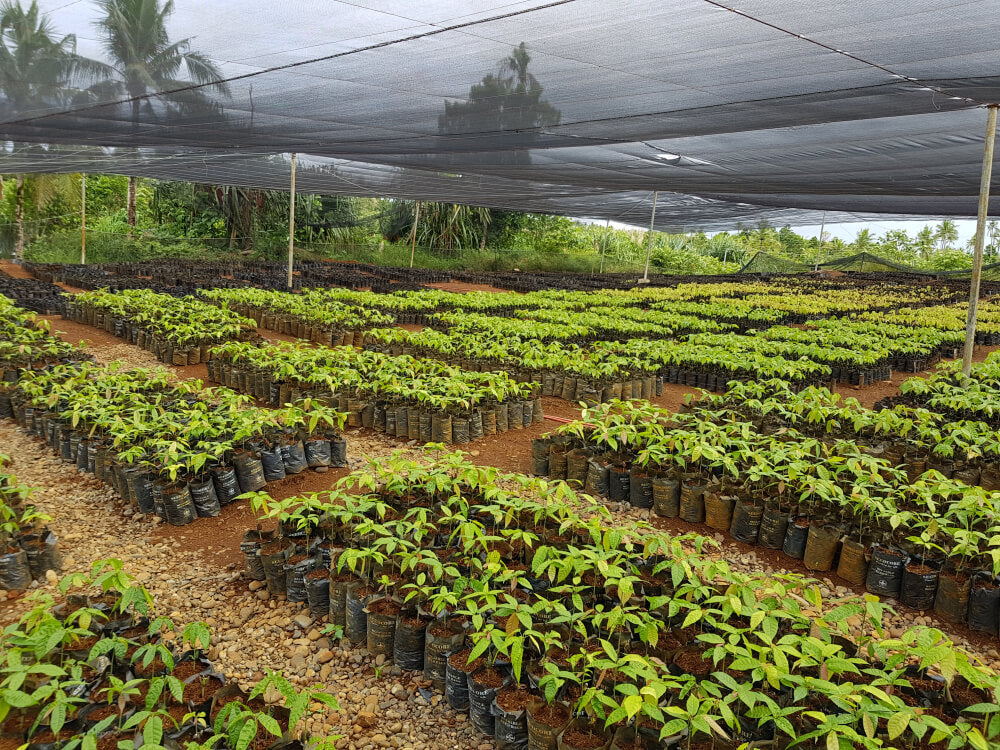
Cacao and tree nursery - Philippines
Productivity - Pillar One
Gathering baseline information from a project area and focusing on productivity and cross-cutting issues is just the beginning of the SPS Biota CSA approach. An assessment on what is working well and what can be improved is an important first step to build in climate smart farming methods and resilience.
Sub-indicators
The selection of specific indicators will be project dependent
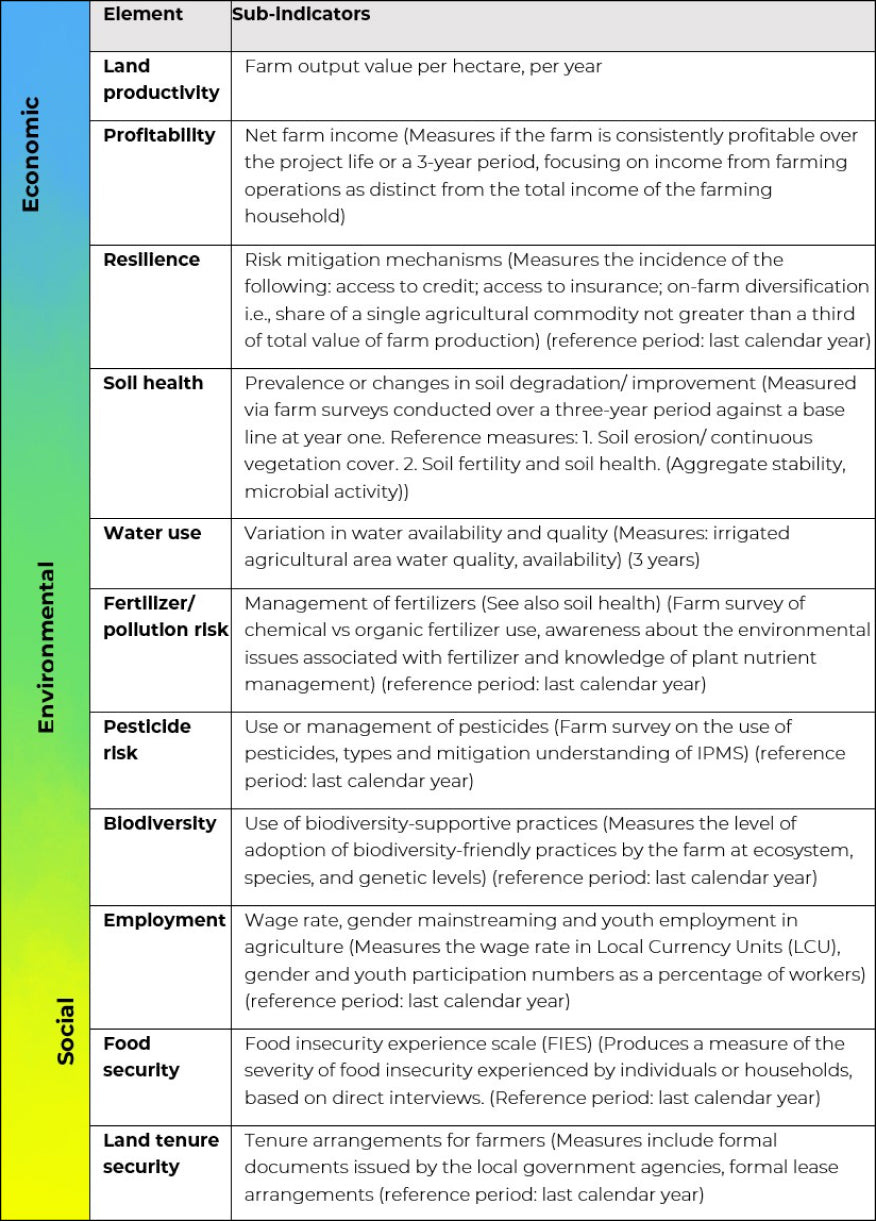
Resilience - Pillar Two
Successful implementation of economic, social and environmental elements leading to measurable improvements across selected indicators. Pillar Two workflows focus on building resilience to both economic and environmental influences.
Sub-indicators
The selection of specific indicators will be project dependent
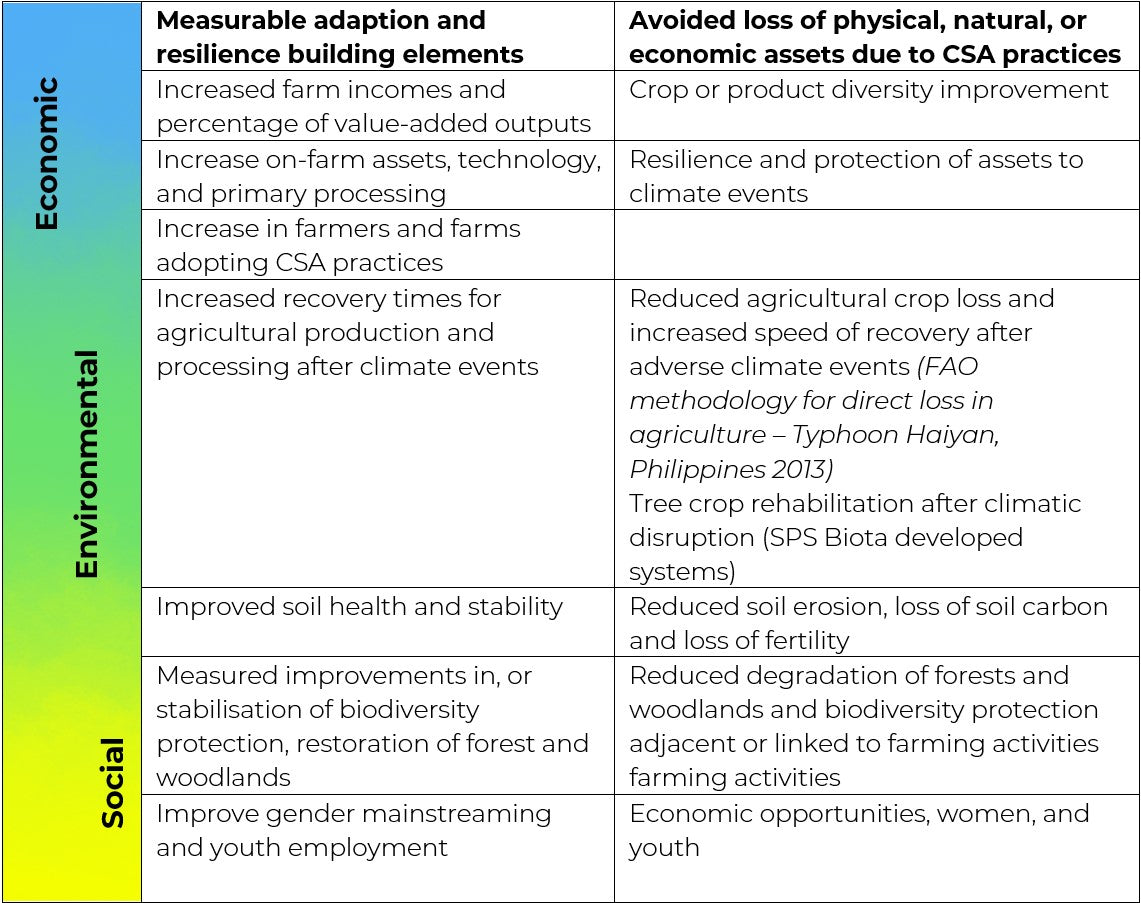
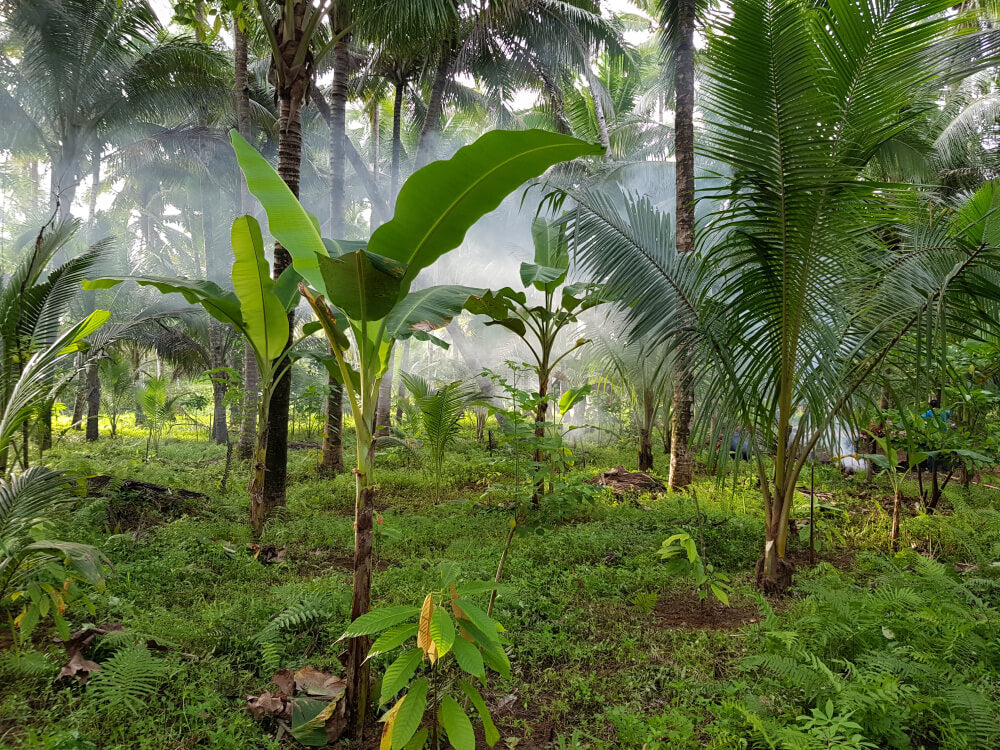

Cacao, coconut and banana cash crops - Philippines
Mitigation - Pillar Three
Sub-indicators
Agroforestry, reducing greenhouse gas emissions and carbon sequestration require specialist skills. SPS Biota forestry expertise can implement regenerative agroforestry, understand mechanisms available to sequester carbon and objectively assess if monetarisation of ecosystem services is appropriate.
Regenerative Agroforestry
SPS Biota - Regenerative Agroforestry uses trees and forests to absorb atmospheric carbon, prevent soil carbon loss and restore forest landscapes. Practical base-line assessments under Pillar One and resilience initiatives delivered under Pillar Two also target emission reduction or elimination of other greenhouse gases, where possible.
Protection and regeneration of primary forest, planting of shade trees and selected selection of cash and food crops, underpin the SPS Biota CSA approach.
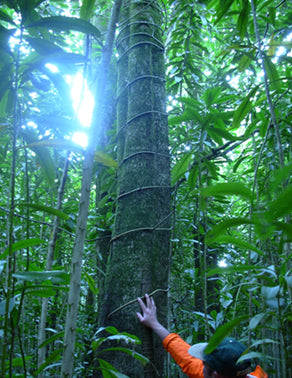
Protected natural forest monitoring, Chatham Islands South Pacific – SPS Biota
Note: Agricultural commodities and associated value chains (not local food production) that can potentially place forests at risk, including beef, cocoa, coffee, maize, palm oil, rice, soy and wheat production, are monitored and negative impacts mitigated.
Alignment to current climate thinking
COP26

Our CSA Regenerative Agroforestry
methods are consistent with and support the climate goals of the COP26 Declaration on Forests and Land use:
“.. to halt and reverse forest loss and land degradation by 2030 while delivering sustainable
development and promoting an inclusive rural transformation”.
REDD+

Principles and mechanisms that support Reducing Emissions from Deforestation and Forest Degradation (REDD+) developed by the United Nations Framework Convention on Climate Change (UNFCCC) are adopted.
In addition to the conservation and biodiversity gains achieved, a financial or off-set value can be attributed to the carbon stored in forests and these are conducive to receiving incentives at a national or local level for developing countries. But will only be considered if payments are equitable and do not threaten food security.
Intercrop Regenerative Agroforestry
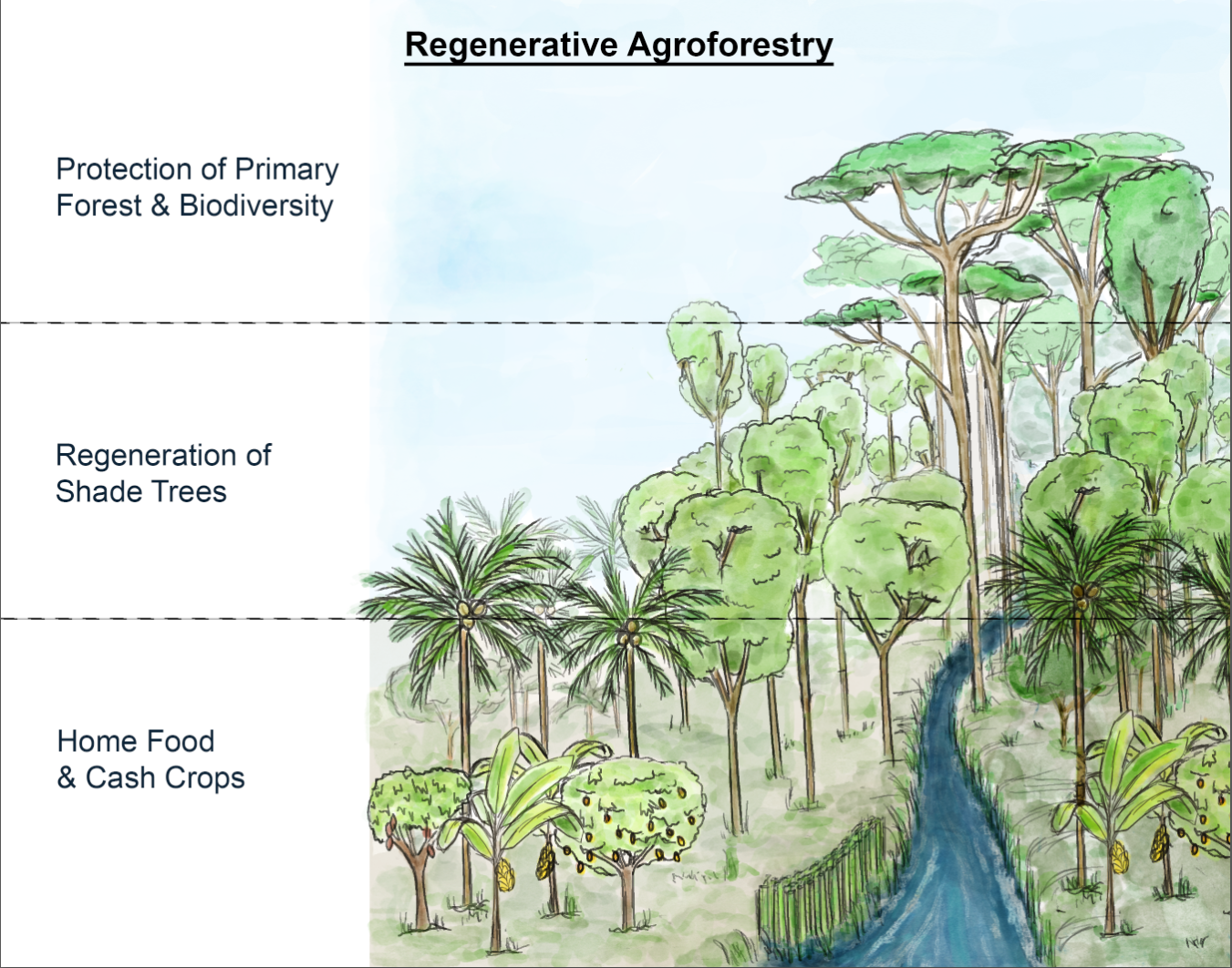
Measuring Carbon
Forests and trees play a vital role in absorbing and storing atmospheric carbon and preventing soil carbon loss. But as forests and woodlands can be both a potential carbon source as well as a carbon sink, management of forest ecosystems and changes in forest cover associated with farming is an important part of combatting climate change. Accounting for any changes in carbon stocks that arise naturally or resulting from human activity, is a key step in delivering good CSA outcomes.
Forest carbon accounting:
• Stock accounting which measures carbon stored in forest ecosystems at a single point in time
• Emissions accounting which is the net greenhouse gas release to the atmosphere from forests
• Emissions reduction accounting which monitors and quantifies any decreases in emissions from projects
(Note: As our CSA projects focus on regenerative agroforest models that are complementary to the production of food, stock accounting of the net carbon benefit per hectare (t/ CO²) will be the primary unit measure.)
Carbon market finance and payments
All the elements of the SPS Biota CSA approach are consistent with the requirements for any potential carbon market financing and payments. However, monetarisation of carbon sequestration (carbon farming) and other ecosystem services will only be considered if:
• CSA principles and goals are supported
• Any payments are fair and equitable
• Carbon market arrangements don’t disadvantage farmers or communities
• Food security is not compromised



